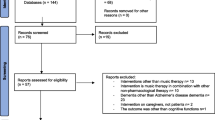Abstract
Passive movement has been found to improve evidently ischemic stroke patients’ impaired capacity of learning and memory, but the optimal time window of initiating the therapy and the underlying mechanism are not fully understood. In this study, the effect of passive movement at different time windows on learning and memory of rats with cerebral infarction was detected. The results showed that the expression of caspase-3 and escape latency in the passive movement group were all considerably lower than those in the model group (P < 0.05), while the expression of Bcl-2 mRNA was significantly higher than those in the model group (P < 0.05). Moreover, we found that there were most significant changes of escape latency and expressions of Bcl-2 mRNA and caspase-3 when the therapy started at 24 h after focal cerebral infarction. These results suggest that passive movement is able to contribute to the recovery of learning and memory of rats with cerebral infarction, which is partially mediated by inhibiting neuron cell apoptosis, and the optimal therapeutic time is at 24 h after cerebral infarction.




Similar content being viewed by others
References
Lloyd-Jones D, Adams R et al (2009) Heart disease and stroke statistics—2009 update: a report from the American Heart Association Statistics Committee and Stroke Statistics Subcommittee. Circulation 119(3):480–486
Saxena SK, Ng TP et al (2007) Is improvement in impaired cognition and depressive symptoms in post-stroke patients associated with recovery in activities of daily living? Acta Neurol Scand 115(5):339–346
Tatemichi TK, Desmond DW et al (1992) Dementia after stroke: baseline frequency, risks, and clinical features in a hospitalized cohort. Neurology 42(6):1185–1193
Dromerick AW, Lang CE et al (2009) Very early constraint-induced movement during stroke rehabilitation (VECTORS): a single-center RCT. Neurology 73(3):195–201
Zhao S, Zhao M et al (2013) Constraint-induced movement therapy overcomes the intrinsic axonal growth-inhibitory signals in stroke rats. Stroke 44(6):1698–1705
Ang E-T, Dawe GS et al (2006) Alterations in spatial learning and memory after forced exercise. Brain Res 1113(1):186–193
Lou SJ, Liu JY et al (2008) Hippocampal neurogenesis and gene expression depend on exercise intensity in juvenile rats. Brain Res 1210:48–55
Radak Z, Toldy A et al (2006) The effects of training and detraining on memory, neurotrophins and oxidative stress markers in rat brain. Neurochem Int 49(4):387–392
van Praag H, Christie BR et al (1999) Running enhances neurogenesis, learning, and long-term potentiation in mice. Proc Natl Acad Sci U S A 96(23):13427–13431
Liao W, Liu S et al (2002) Modification of the preparation of models of focal ischemic brain injury with suture occlusion in rats. Chin J Phys Med Rehabil 24(6):345–348
Longa EZ, Weinstein PR et al (1989) Reversible middle cerebral artery occlusion without craniectomy in rats. Stroke 20:84–91
Houle JD, Morris K et al (1999) Effects of fetal spinal cord tissue transplants and cycling exercise on the soleus muscle in spinalized rats. Muscle Nerve 22:846–856
Petajan JH, Songster G et al (1981) Effects of passive movement on neurogenic atrophy in rabbit limb muscles. Exp Neurol 71:92–103
Morris R (1984) Developments of a water-maze procedure for studying spatial learning in the rat. J Neurosci Methods 11(1):47–60
Okada M, Tamura A et al (1995) Long-term spatial cognitive impairment following middle cerebral artery occlusion in rats. A behavioral study. J Cereb Blood Flow Metab 15(3):505–512
Yonemori F, Yamada H et al (1996) Spatial memory disturbance after focal cerebral ischemia in rats. J Cereb Blood Flow Metab 16(5):973–980
Man LI, Peng J et al (2012) Electro-acupuncture combined with transcranial magnetic stimulation improves learning and memory function of rats with cerebral infarction by inhibiting neuron cell apoptosis. J Huazhong Univ Sci Technol Med Sci 32(5):746–749
Ni B, Wu X et al (1998) Transient global forebrain ischemia induces a prolonged expression of the caspase-3 mRNA in rat hippocampal CA1 pyramidal neurons. J Cereb Blood Flow Metab 18(3):248–256
Swanton E, Savory P et al (1999) Bcl-2 regulates a caspase-3/caspase-2 apoptotic cascade in cytosolic extracts. Oncogene 18(10):1781–1787
Zhang R, Xue Y-Y et al (2006) Bcl-2 enhances neurogenesis and inhibits apoptosis of newborn neurons in adult rat brain following a transient middle cerebral artery occlusion. Neurobiol Dis 24(2):345–356
Sim Y-J, Kim S-S et al (2004) Treadmill exercise improves short-term memory by suppressing ischemia-induced apoptosis of neuronal cells in gerbils. Neurosci Lett 372(3):256–261
Luo CX, Jiang J et al (2007) Voluntary exercise-induced neurogenesis in the postischemic dentate gyrus is associated with spatial memory recovery from stroke. J Neurosci Res 85(8):1637–1646
Zhang P, Yu H et al (2013) Early exercise improves cerebral blood flow through increased angiogenesis in experimental stroke rat model. J Neuroeng Rehabil 10:43
Ma Y, He M et al (2013) Exercise therapy downregulates the overexpression of TLR4, TLR2, MyD88 and NF-κB after cerebral ischemia in rats. Int J Mol Sci 14(2):3718–3733
Acknowledgment
This work was supported by grants 30640010 from the Program of National Natural Science Foundation of China (to YF).
Author information
Authors and Affiliations
Corresponding author
Additional information
Man Li and Jun Peng contributed equally to this project.
Rights and permissions
About this article
Cite this article
Li, M., Peng, J., Wang, MD. et al. Passive Movement Improves the Learning and Memory Function of Rats with Cerebral Infarction by Inhibiting Neuron Cell Apoptosis. Mol Neurobiol 49, 216–221 (2014). https://doi.org/10.1007/s12035-013-8512-9
Received:
Accepted:
Published:
Issue Date:
DOI: https://doi.org/10.1007/s12035-013-8512-9




